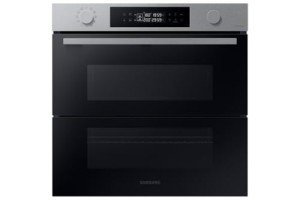The 12 Most Popular Oven Built In Accounts To Follow On Twitter
The Rise of Built-In Ovens: A Comprehensive Guide
Worldwide of modern kitchens, built-in ovens have carved a specific niche for themselves, changing both the performance and visual appeal of cooking spaces. hob and built in oven package explores the numerous advantages of built-in ovens, their installation considerations, and a comparison with standard freestanding designs.
Understanding Built-In Ovens
Built-in ovens are created to be integrated effortlessly into kitchen cabinetry, offering a sleek and advanced look. Unlike freestanding designs, which rest on the flooring, built-in ovens are installed at eye level or under counter tops, making them ergonomic and easy to access.
Types of Built-In Ovens
Built-in ovens come in numerous types, each catering to different cooking requirements and preferences. Here's a quick summary:
- Single Built-In Oven: Ideal for smaller sized kitchen areas, offering sufficient cooking area for the majority of requirements.
- Double Built-In Oven: Offers separate compartments for cooking, best for larger families or those who often captivate guests.
- Steam Ovens: Utilizes steam cooking for much healthier meals, retaining nutrients and wetness.
- Convection Ovens: Equipped with fans to circulate hot air evenly, making sure faster and more constant cooking.
Type
Description
Best for
Single Built-In
One spacious oven compartment
Small families
Double Built-In
2 compartments for synchronised cooking
Large households
Steam Oven
Steam-based cooking method
Health-conscious cooks
Stove
Fan-assisted cooking for even heat circulation
Those who bake typically
Benefits of Built-In Ovens
Visual Appeal
Built-in ovens offer a smooth, integrated look that boosts the overall look of a kitchen. They are available in various styles and surfaces that can complement existing cabinetry and decoration, producing a streamlined and cohesive appearance.
Area Efficiency
Designed to fit seamlessly into kitchen styles, built-in ovens can save valuable floor area, making them ideal for smaller kitchens. By conserving space, property owners can benefit from additional storage alternatives or more counter area for food preparation.
Ergonomics
Setting up ovens at eye level gets rid of the need to flex down, minimizing strain when looking at food or getting rid of hot meals. This ergonomic advantage is especially helpful for individuals with movement obstacles.
Flexibility
Built-in ovens typically come with a variety of cooking modes and features, from convection cooking to self-cleaning choices, offering users versatility in their cooking methods.
Energy Efficiency
Modern built-in ovens are typically designed to be more energy-efficient than conventional designs. Features such as better insulation and advanced heating aspects help in reducing energy consumption.
Installation Considerations
While the benefits of built-in ovens are substantial, particular elements need to be thought about before going with this kitchen upgrade:
Space Requirements: Built-in ovens require particular area measurements in regards to width, height, and depth. Accurate dimensions should be considered to prevent installation concerns.
Electrical and Gas Hookups: Built-in ovens might require particular electrical circuitry setups or gas connections. Certified experts must handle this installation to ensure security and compliance with local codes.
Cabinetry Compatibility: The design and structure of existing cabinets should be examined. Built-in designs might demand modifications to cabinetry, or brand-new cabinets may need to be developed to accommodate them.
Cost: Built-in ovens usually come at a premium cost compared to freestanding designs. House owners must evaluate their budget plans appropriately and consider long-lasting advantages.
Setup Steps
Below are the fundamental actions involved in setting up a built-in oven:
- Preparation: Measure the space and remove old appliances if required.
- Electrical/Gas Setup: Ensure the essential electrical or gas connections are ready and looked for compliance.
- Cabinet Adjustment: Modify cabinets as required to fit the built-in oven.
- Positioning: Carefully put the oven into the designated area and level it.
- Connection: Connect the oven to power or gas and guarantee all fittings are secure.
- Checking: Turn on the oven to guarantee it runs correctly.
Frequently Asked Questions (FAQs)
1. Are built-in ovens simple to install?
While fundamental setup can be handled by a useful individual, it is recommended to hire a professional, specifically when handling electrical or gas fittings.
2. Can I change my freestanding oven with a built-in oven?
Yes, however it will require careful measurement and potentially some modifications to your existing cabinets to fit the built-in model.
3. How do built-in ovens impact kitchen resale worth?
Built-in ovens can enhance a kitchen's appeal, often making it more appealing to possible purchasers, therefore supporting a higher resale worth.
4. Are built-in ovens more expensive than freestanding designs?
Normally, built-in ovens are more expensive due to their design and features. However, their boosted aesthetics and performance might justify the expense for lots of property owners.
5. What are the very best brands for built-in ovens?
Some recognized brands consist of Bosch, Miele, KitchenAid, and Electrolux, each known for their quality and innovation.
Built-in ovens represent a substantial leap in kitchen innovation, using a blend of design, efficiency, and performance. While they require mindful consideration concerning area, installation, and cost, the advantages they supply make them an appealing option for modern-day house owners. Whether updating an existing kitchen or designing a brand-new one from scratch, built-in ovens can elevate the cooking experience and enhance overall kitchen aesthetics. From functionality to beauty, they truly embody the best of modern cooking services.
